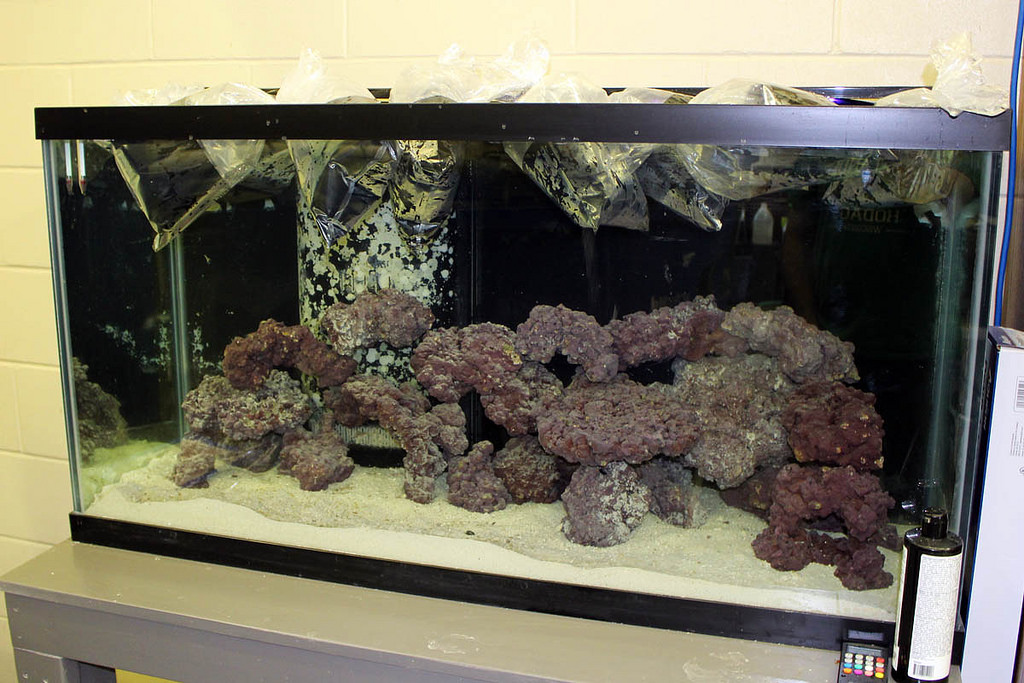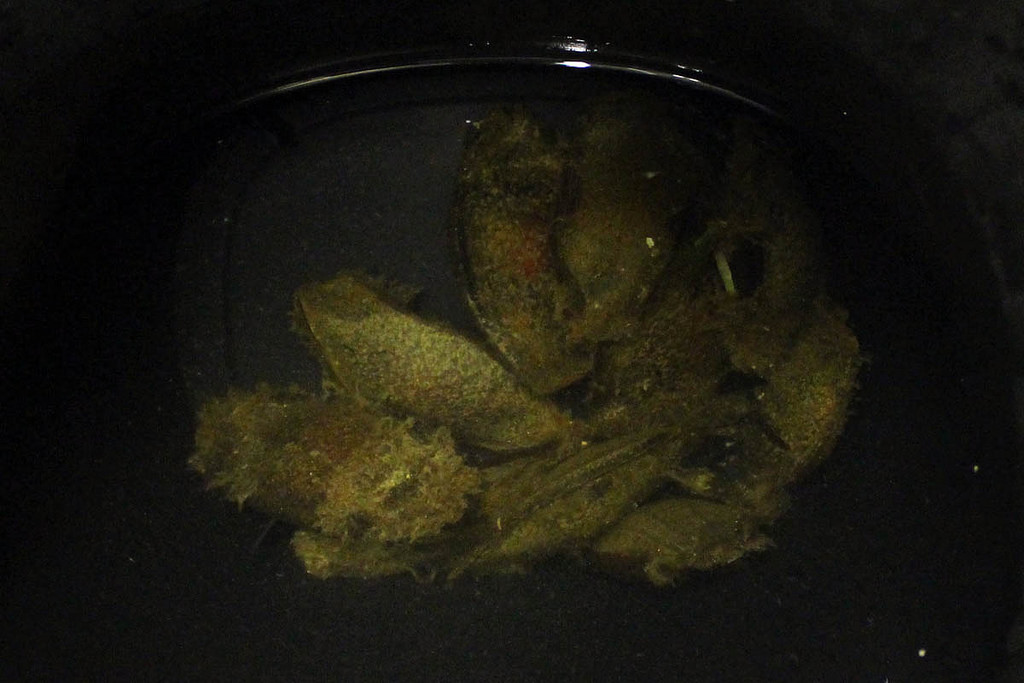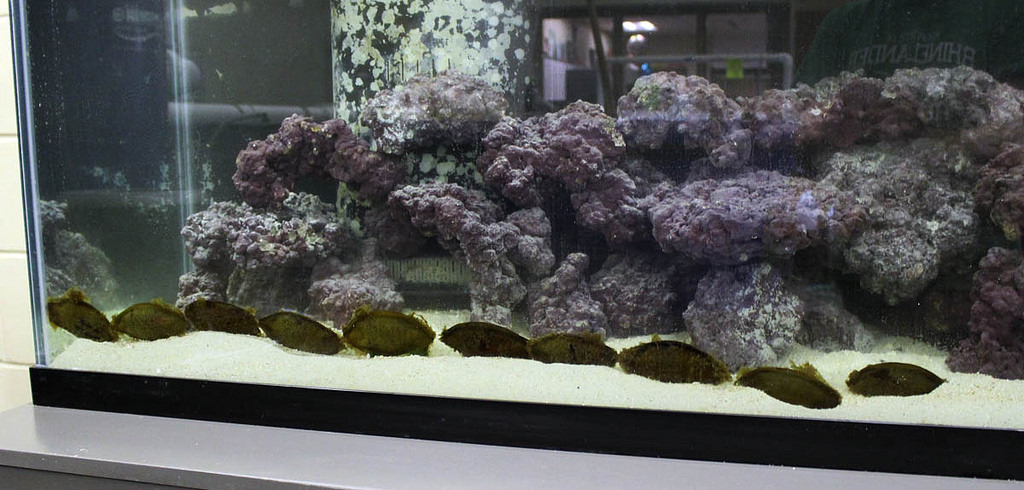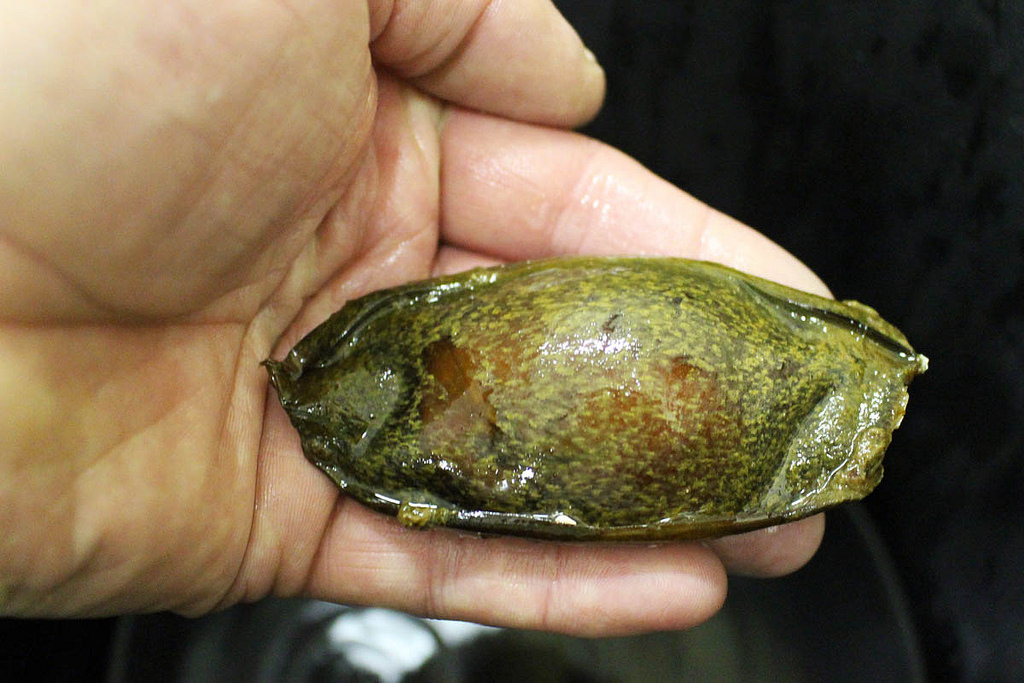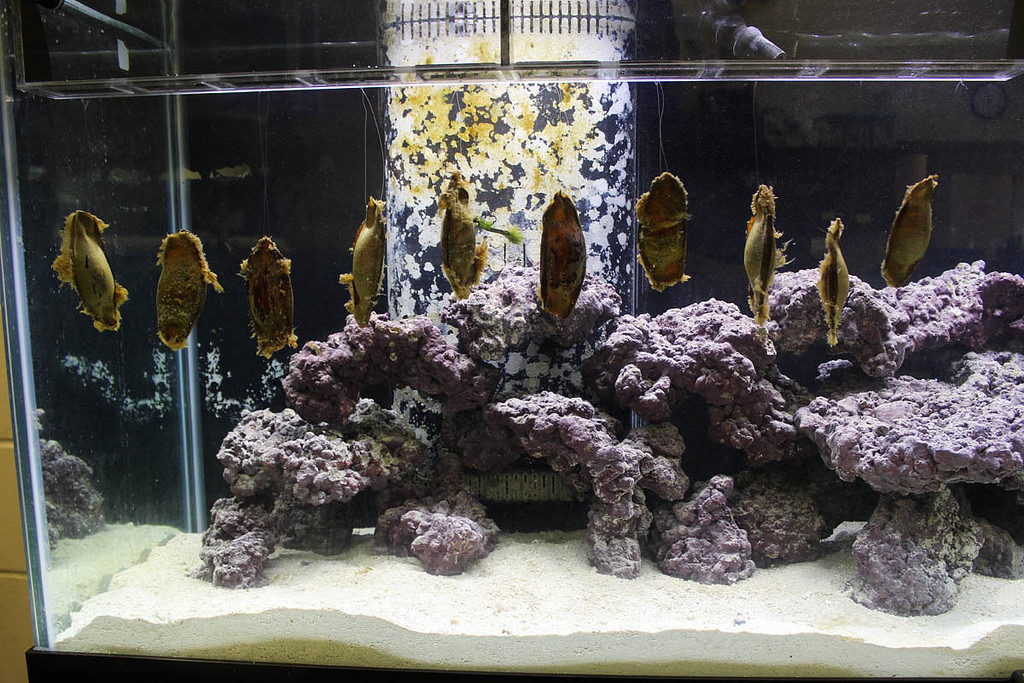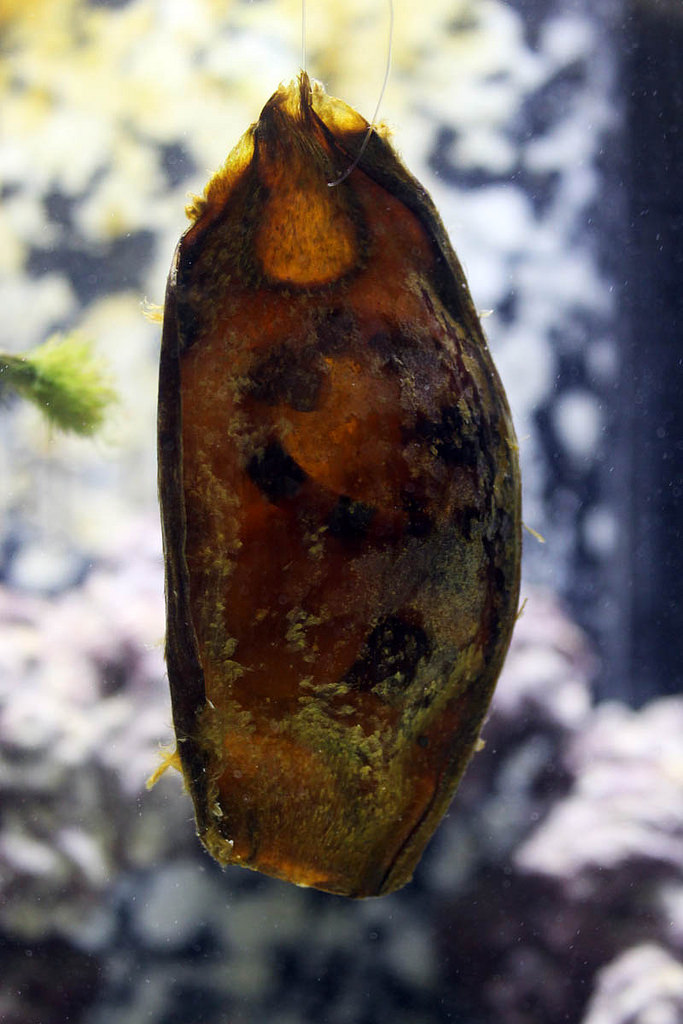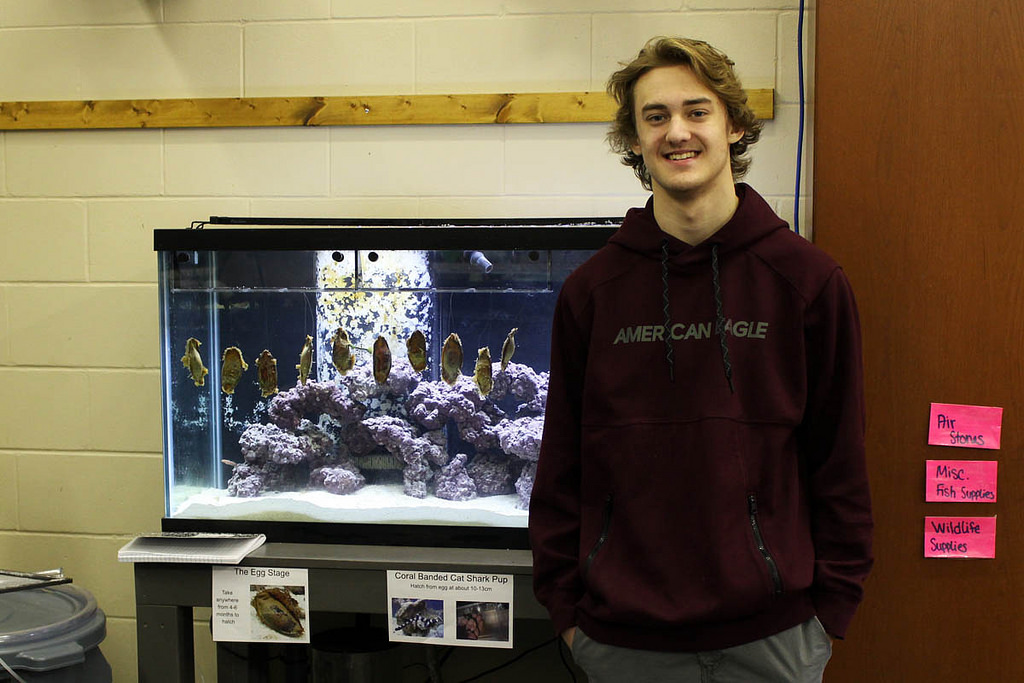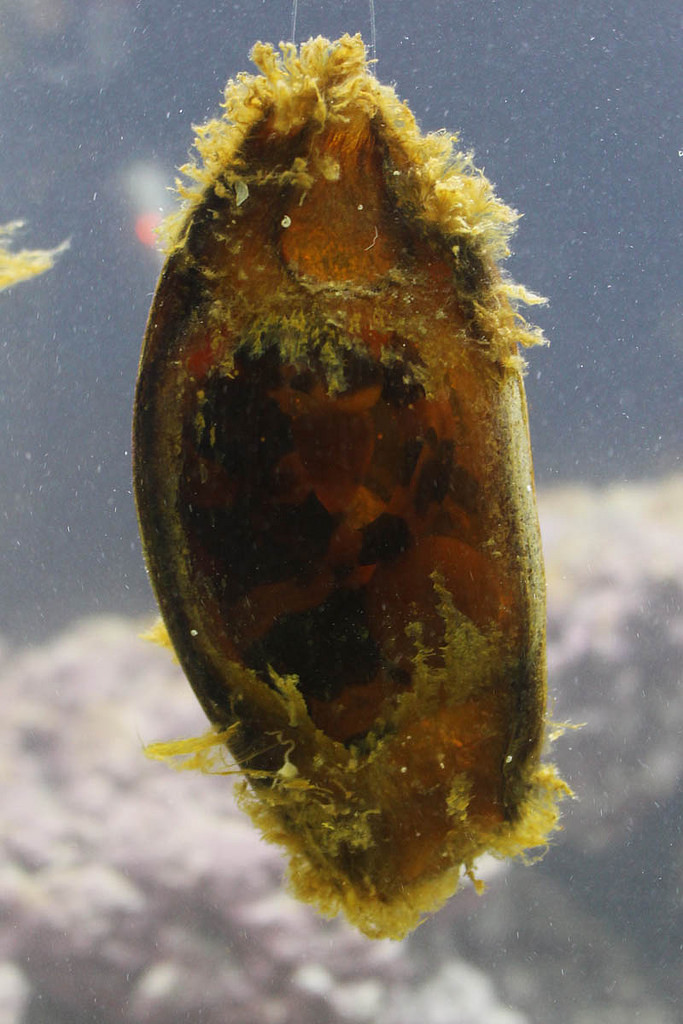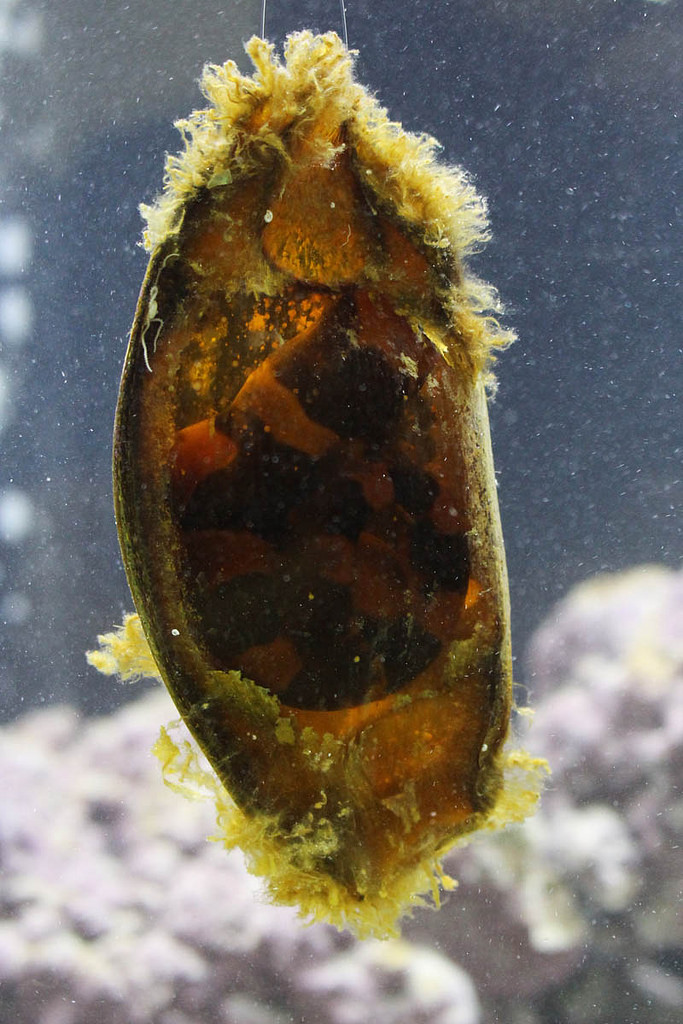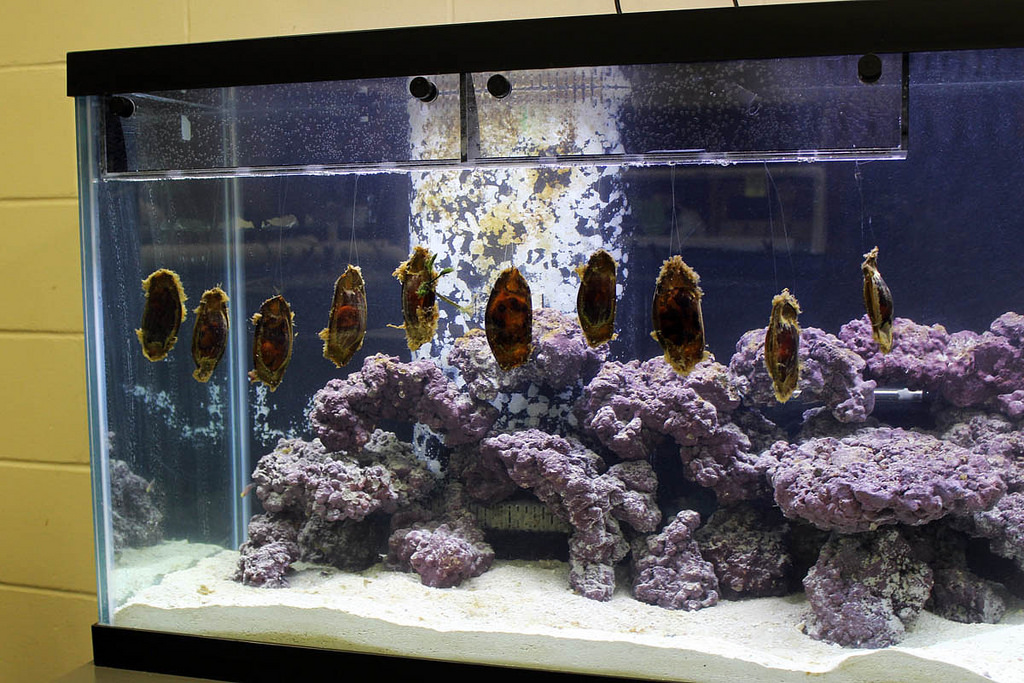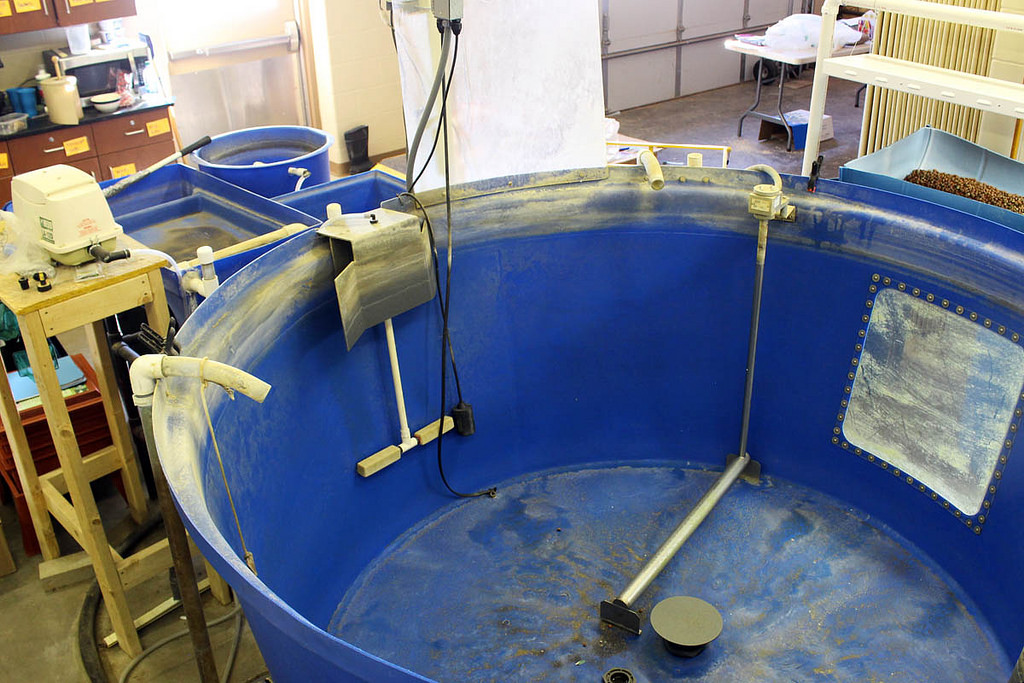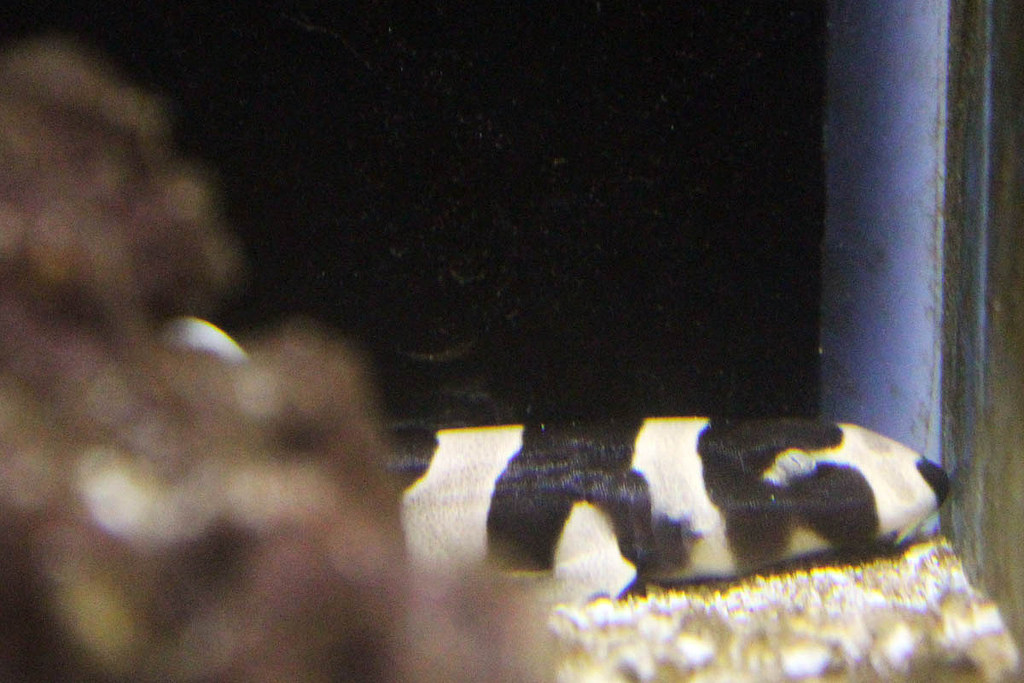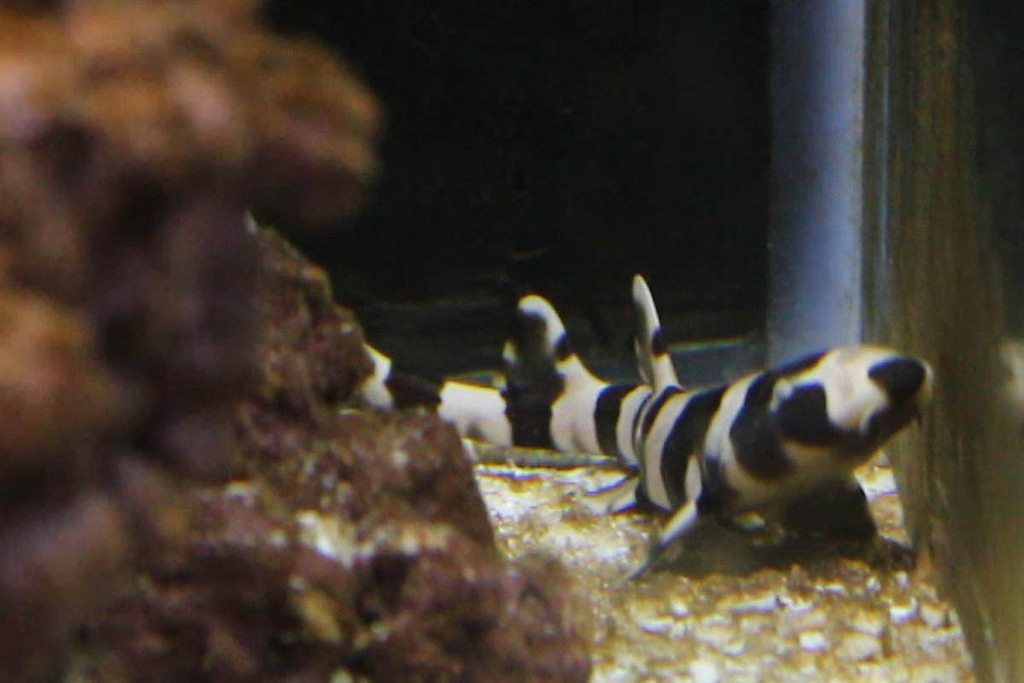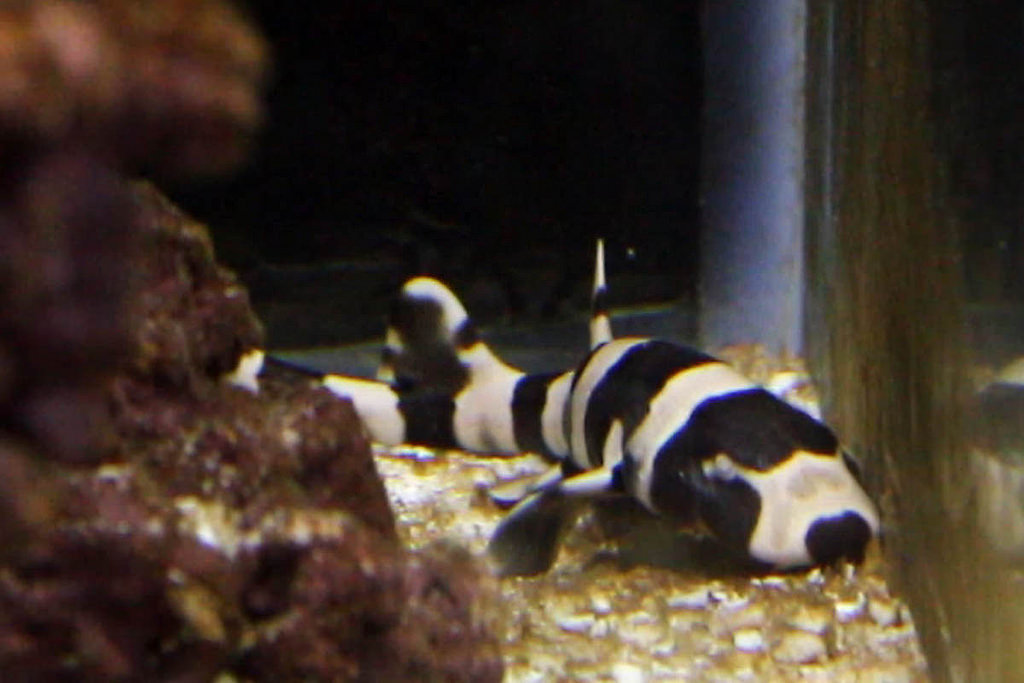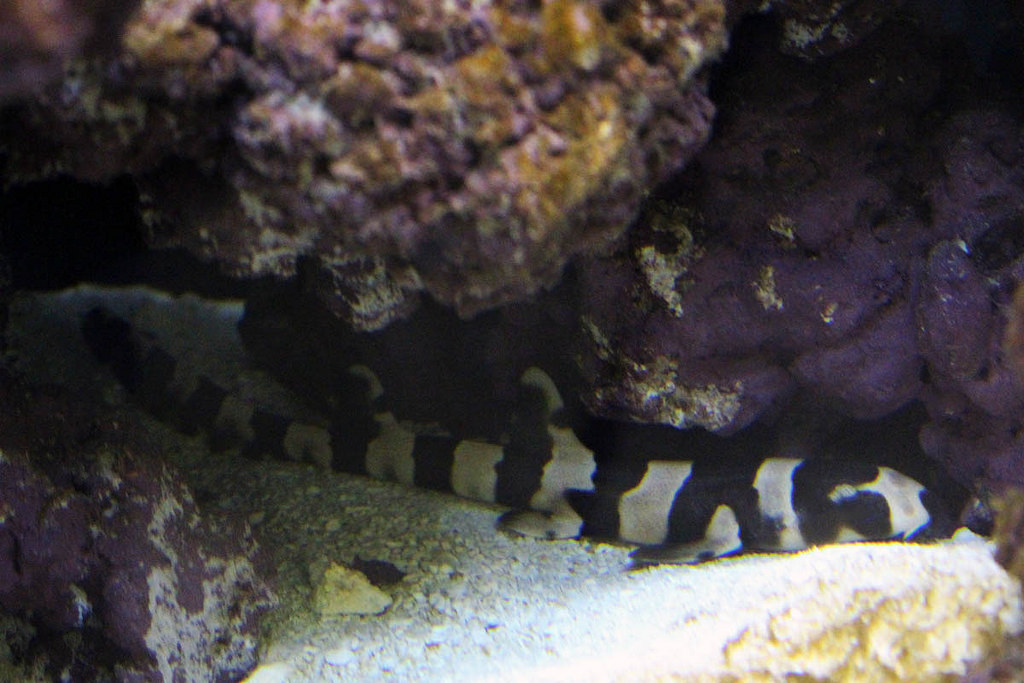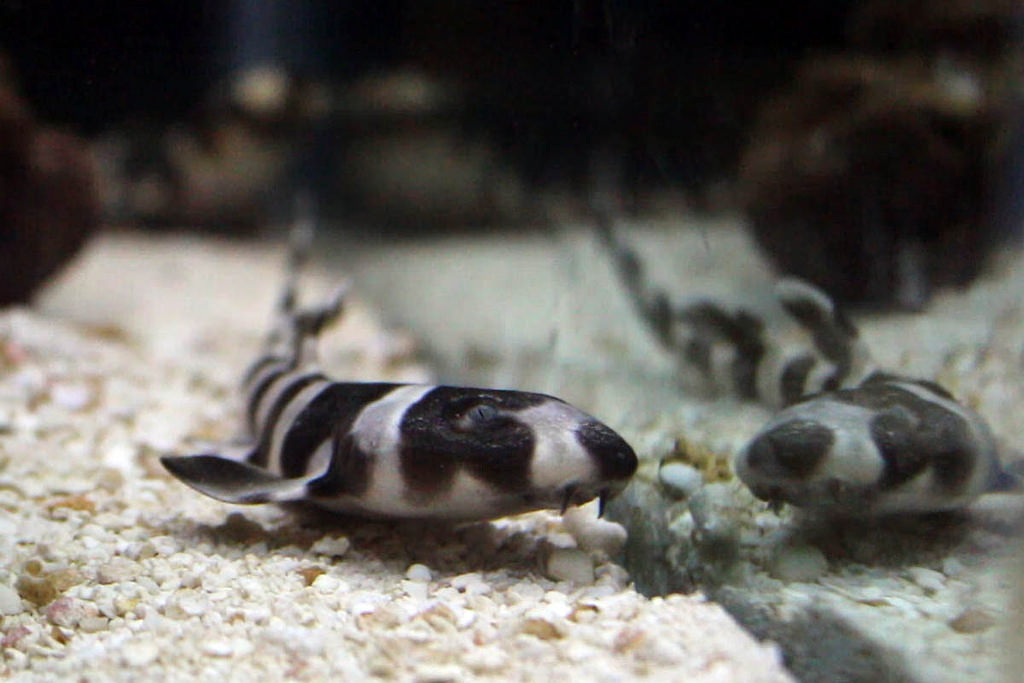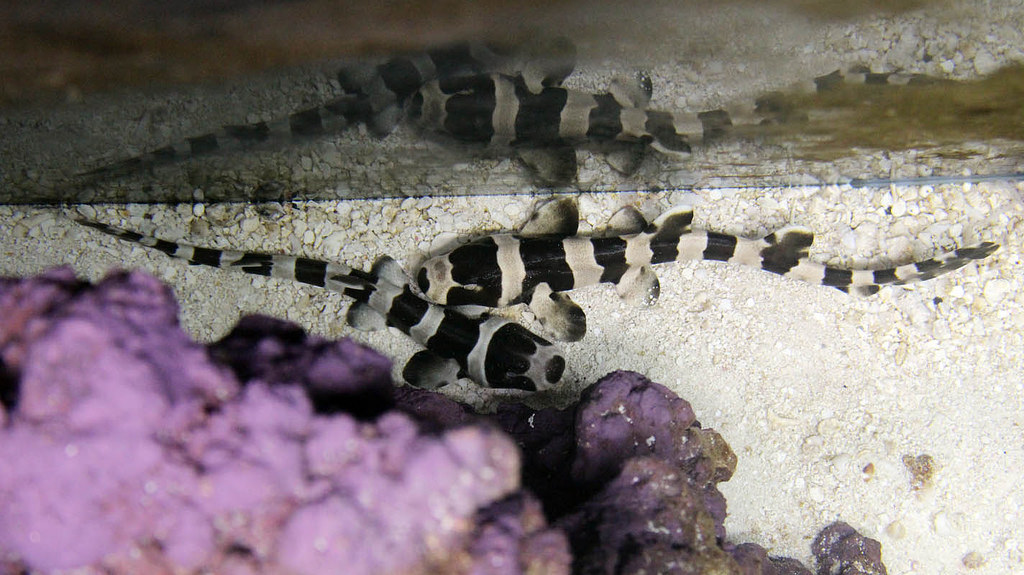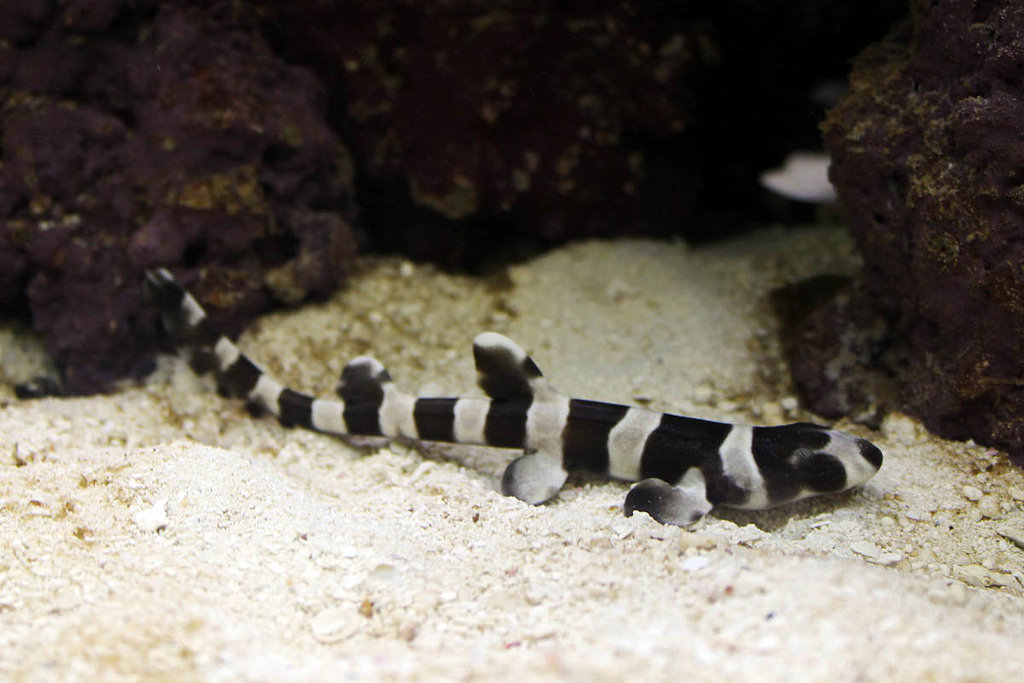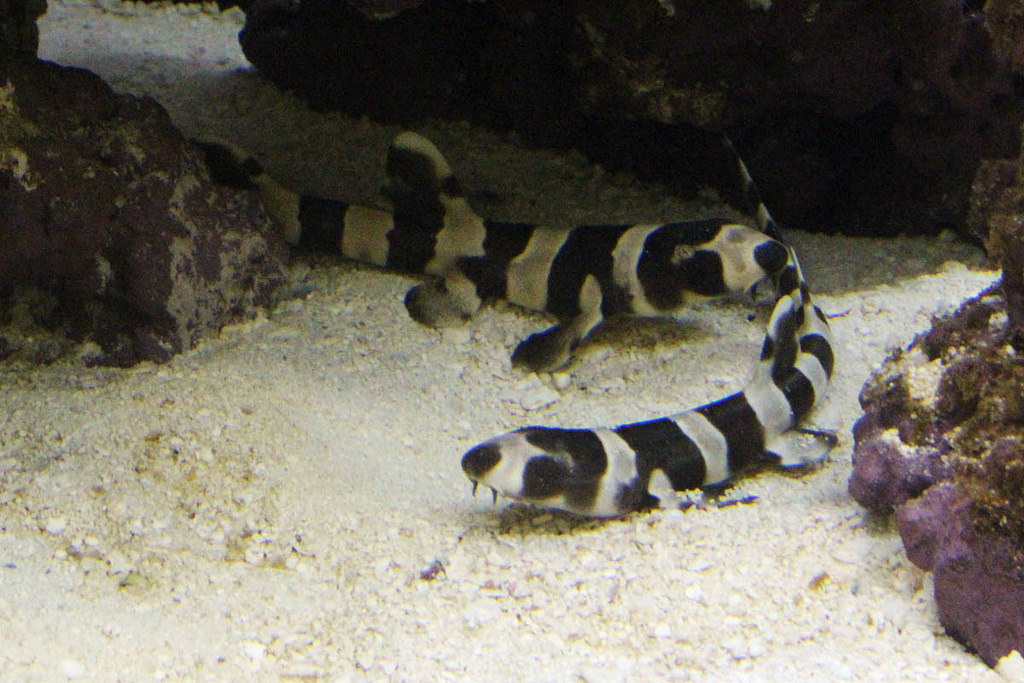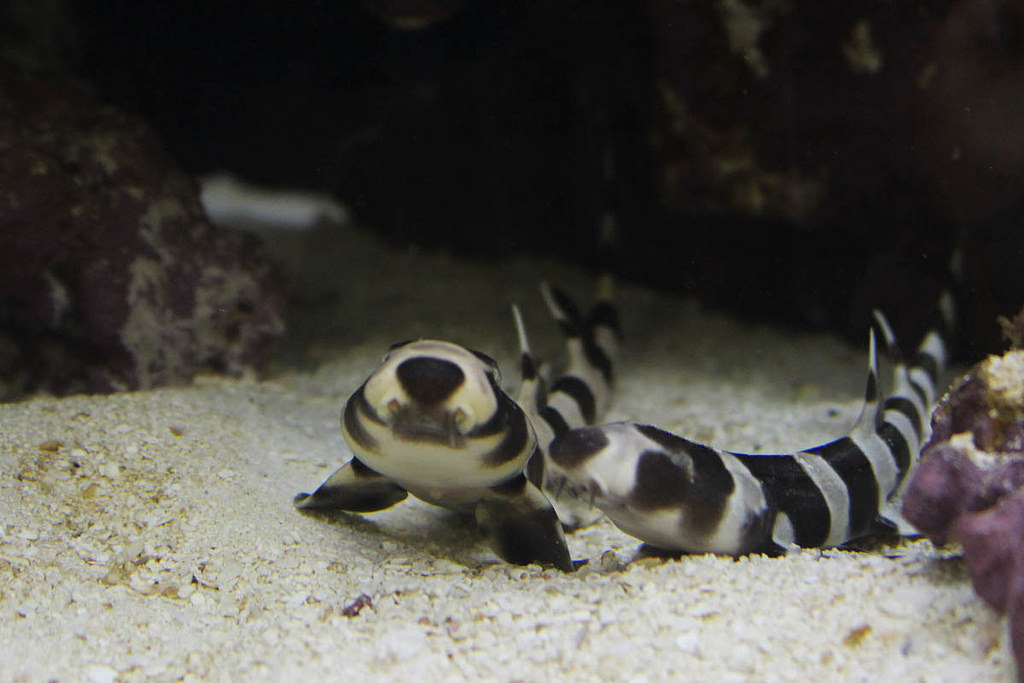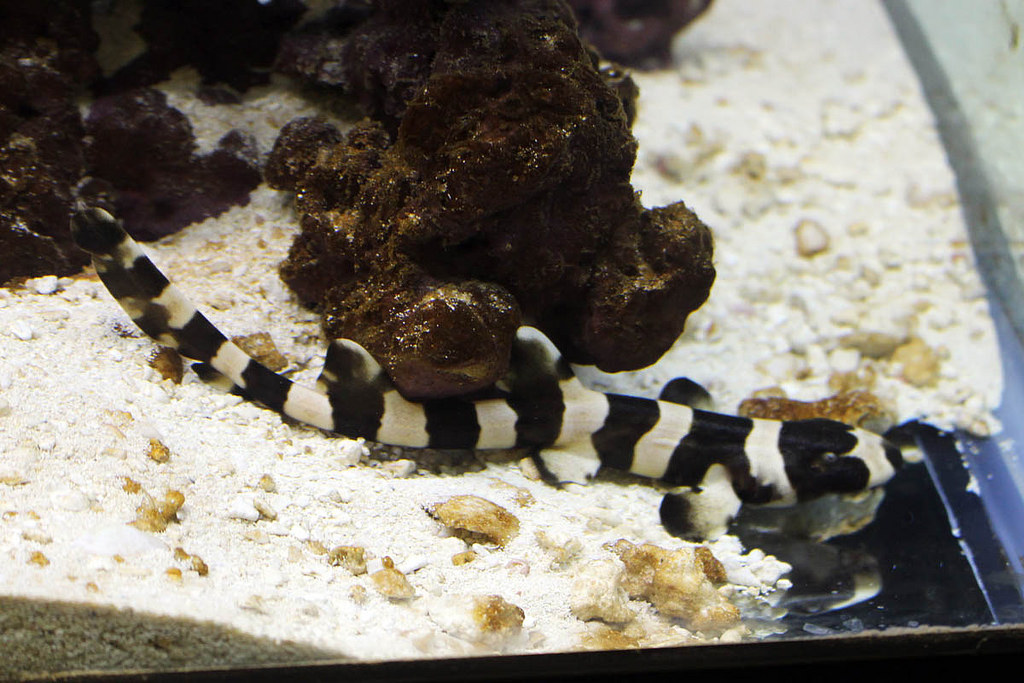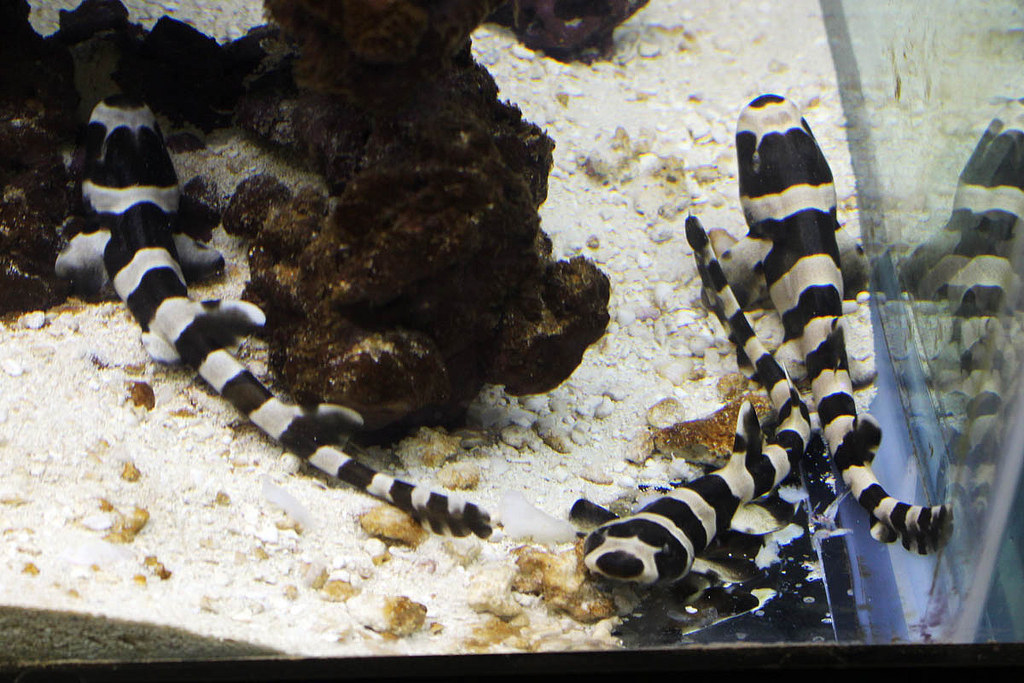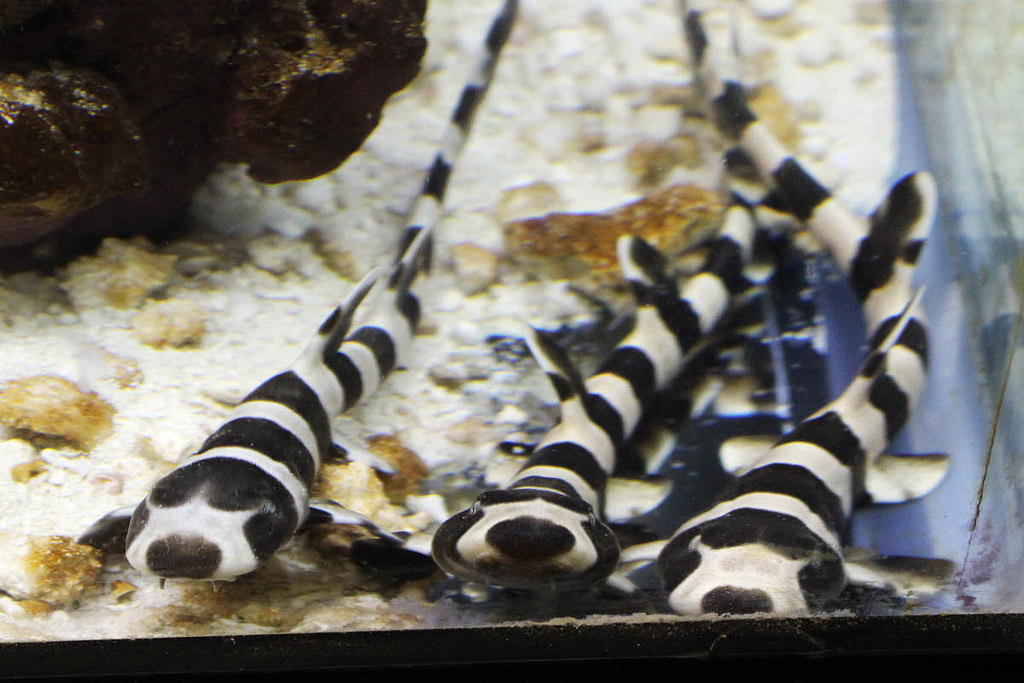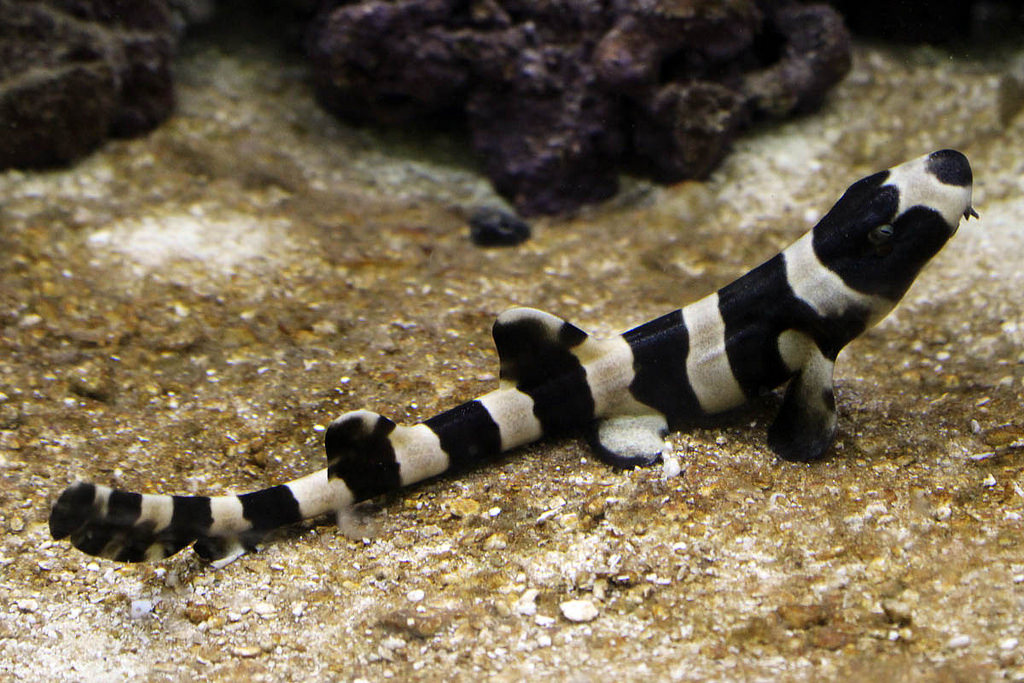Hi Reef2Reef community.
This is going to be a thread documenting an independent study project of hatching and raising small sharks by my son at his high school.
I've asked if I could bring this project over to Reef2Reef to share with this community and I was granted permission to do so.
This project was initially started late last summer and I've been documenting it on my local forum (TCMAS.org) and my personal Facebook page. By bringing the thread over to Reef2Reef, it would broaden the audience and hopefully elicit more response/discussion with the project itself.
Since this project has been ongoing, I'll post the dates of the original post to help recreate the timeline.
Let's get you all caught up. This first post will be a long one!!!
August 31, 2017.
It appears that this next year will be full of new experiences for my son; and myself.
My son, Eric, will be starting his senior year of high school next week and he will be taking a biology independent study course. These courses usually involve the student presenting a project that they will work on throughout the year, conduct research and experiments, submit reports and whatnot.
He's considered breeding clownfish or cardinalfish in the past but wasn't all too thrilled about doing that. During our last visit to Rhinelander (LiveAquaria's Aquaculture Coral and Aquatic Life Facility) , he noticed a tank full of banded cat shark eggs. He asked if we could set up a tank at home to hatch a shark. I mentioned that he could do that as his biology project; not thinking it was even a possibility.
This week, he approached his instructor and she was actually on board with that idea. The school has an established aquatic lab consisting of three freshwater systems, but one of them is currently empty and could be converted to saltwater. The instructor told Eric that he needed to search out resources and additional support; that'd be me. Eric has already reached out to Kevin with LiveAquaria about sourcing equipment and livestock; and he's on board. I have reached out to a few people that I know asking for input and recommendations. Eric and I will be meeting with his instructor and the school to discuss his project tomorrow. Based on the amount of outside support we can garner, the school is willing to ask for grants to establish a saltwater program at the school. My son wants to be the student to bring attention to the ocean and its inhabitants to his school; and to have the program continue beyond his involvement.
Why didn't we have opportunities like this when we were in school?
Eric plans to study the marine sciences when he attends college next year. He has a definite interest in sharks and wants to pursue a career in studying them, so a project like this (while still in high school) will be a great step towards his future goals.
And I'm excited to be along for the ride!
Wish us luck!
September 1, 2017.
Post Instructor Meeting Update.
Our meeting with Eric's instructor went rather well. She seems just as excited as were are about this project.
When we arrived, she had a class in session (freshman started today, everyone else on Tuesday), so we toured the lab for a while. The lab consists of two systems. The large system has two large vats (800gal each) hooked up to a commercial sized filtration system with a bead filter, biofilter, UV sterilizer and other gadgets that are currently housing tilapia that are grown and then sold. The smaller system (the one Eric gets to convert) consists of a 800gal vat with a much simpler filtration system; sediment tray, biofilter and mechanical filter that is all run via an air pump and uplift plumbing.
So the good news is that the system is a clean slate and is ready to be torn down as soon as needed for conversion. The bad news is it is a clean slate and much work and potential changes will need to be done for the conversion. The more immediate plan is to design a system (standard aquarium set up) that can house the shark eggs and juvenile sharks, send off Eric's proposal to various sources for support and donations and then begin the dismantling and conversion of the vat system.
This is going to be quite the commitment for my son, so we'll see how he does; and we'll see how much I get/need to contribute.
September 13, 2017.
I posted this on my Facebook page, but I thought I would add it here as not everyone I know here is on Facebook.
Jason Langer is looking for volunteers.
19 mins ·
Attn: My Saltwater Aquarium Friends
My son, Eric, has started his senior year of high school and is already pursuing his interest for an education in the Marine Sciences. He is taking an Independent Study course for the year to concentrate on his personal interest in sharks.
Our high school has an existing freshwater aquaculture lab with multiple vat systems where they raise tilapia and blue gill each year. The school has granted Eric the permission to start a saltwater system and the opportunity to convert one of the large freshwater systems to saltwater. This will be a new venture for the school and its biology department. Eric's goal is not only to raise to sharks, but to bring attention of the entire ocean and the life that lives there to the school and student body.
This will be an ambitious adventure for Eric that will involve a lot of time and hard work; and support. I applaude Eric for his drive and ambition and I have volunteered to support and assist him during this project.
This is where I reach out to you and ask you to read Eric's proposal and request for assistance with his project.
"Hi. My name is Eric Langer.
I am currently a senior attending New Richmond High School in New Richmond, Wisconsin. I am currently working in our aquaculture lab that has been running for almost ten years.
This year, I am working on a project for my Independent Study course involving sharks. My goal for this project is to hatch and raise some smaller species of sharks; i.e. coral banded sharks, horn sharks and/or catsharks . And I hope to grow this small project by converting an existing freshwater 800 gallon system into a saltwater system based around sharks and rays with other compatible and easy to keep fish. The ultimate plan is for these systems to continue running after I graduate, bringing saltwater aquaculture to our high school.
As most of you know, saltwater systems aren't cheap, and getting hands on materials needed for my project as a full-time enrolled high schooler isn't the easiest thing to do.
My goal is to set up a 75 gallon aquarium with a 20 gallon long sump. I will need the basic equipment to set up this system; i.e. tanks, filtration, heating and lighting. Other needed materials are items like salt mix, sand and live rock, water filtration equipment and materials, water conditioners, test kits and foods. A saltwater aquarium system will be new to our aquaculture lab so I will be starting from ground zero. Any donations are greatly appreciated as this will be a huge step for me as a high schooler in furthering my career in Marine Science.
As for the 800 gallon system, I am hoping to get more information about how the school will allow me to receive donations for a protein skimmer to switch over the current 800 gallon system from freshwater to saltwater; as there are some changes that need to be made for the switch to happen. I would also like to get some feedback on the system I have to work with and what changes should be considered.
Last, but not least, I will eventually need to acquire some shark eggs.
Feel free to email me if you have any recommendations or questions at [email protected] or for a list of items needed for these projects.
You are also free to ask any questions or leave any comments in this post.
Thanks you for your time.
Eric Langer"
As Eric's dad, it's very exciting to see his enthusiasm and eagerness towards furthering his education and start a path towards a career he (and I) will enjoy.
Thanks for taking the time to read this; and Eric's proposal.
If you have any questions or comments that you would like to ask me, send me a PM. I am more than willing to be the liaison between you and my son.
If you think of anyone that could possibly be of assistance to Eric's project, please share this with them.
I took some photos of the existing system when I visited the lab; I'll post those later.
The existing system is one of the pre-packaged systems offer by Aquatic Eco-Systems. It's a 1000gal vat (filled to 800gal) with a bottom drain that feeds a sediment tray, a bio-tower and a mechanical filter tower and it's air driven; a large air pump is hooked up to a manifold that feeds multiple airlift tubes. The only other piece of equipment is a drop in heater. So there's not much to work with (for now), but it's a place to start.
The smaller system that will be converted.
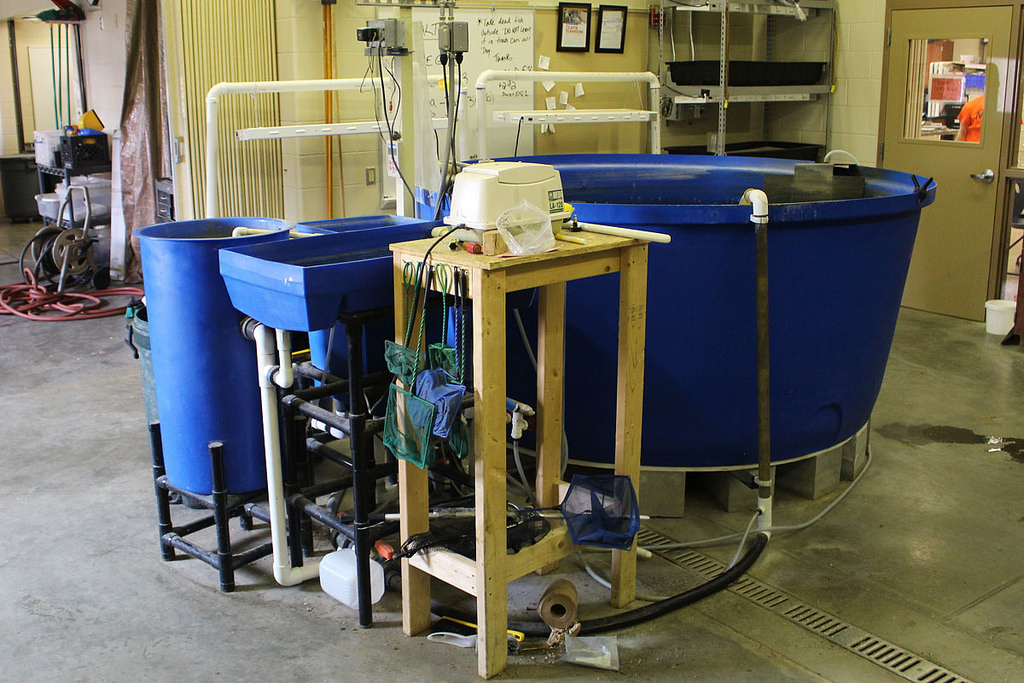
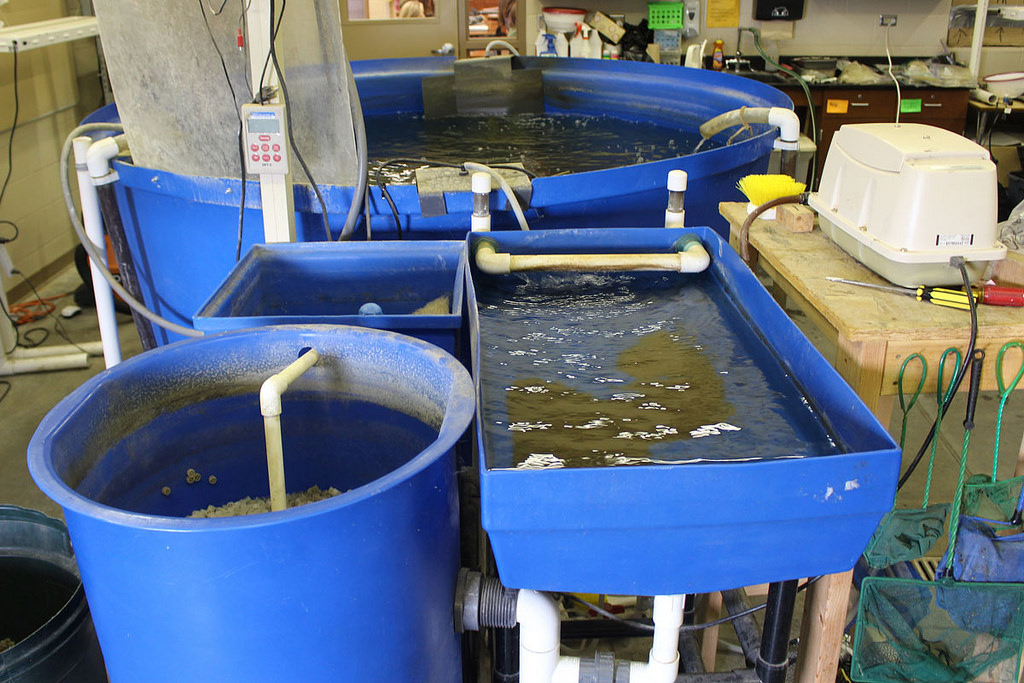
Here's the filtration systems.
The tub has two drains; one drain feeds the sediment tray and the other drain goes to the mechanical filter and bio-tower.
What you cannot see is that there's a drop in heater in the main tub; one of those long "L"-shaped ones with the heating element sitting just off the floor of the tub.
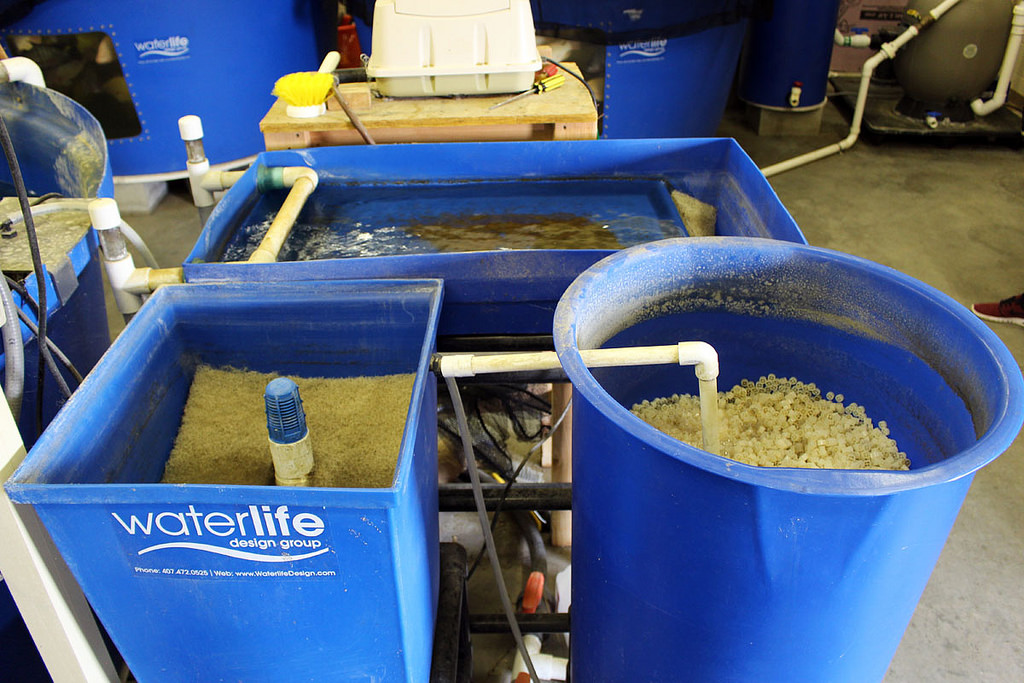
The heart of this system; an air pump.
The pump is connected to a manifold that has eight lines going to various lift tubes to move the water. If I recall correctly, two lines are for returns, two lines are for circulation, two lines for the sediment tray, one line for the bio-tower and one for the mechanic filter.
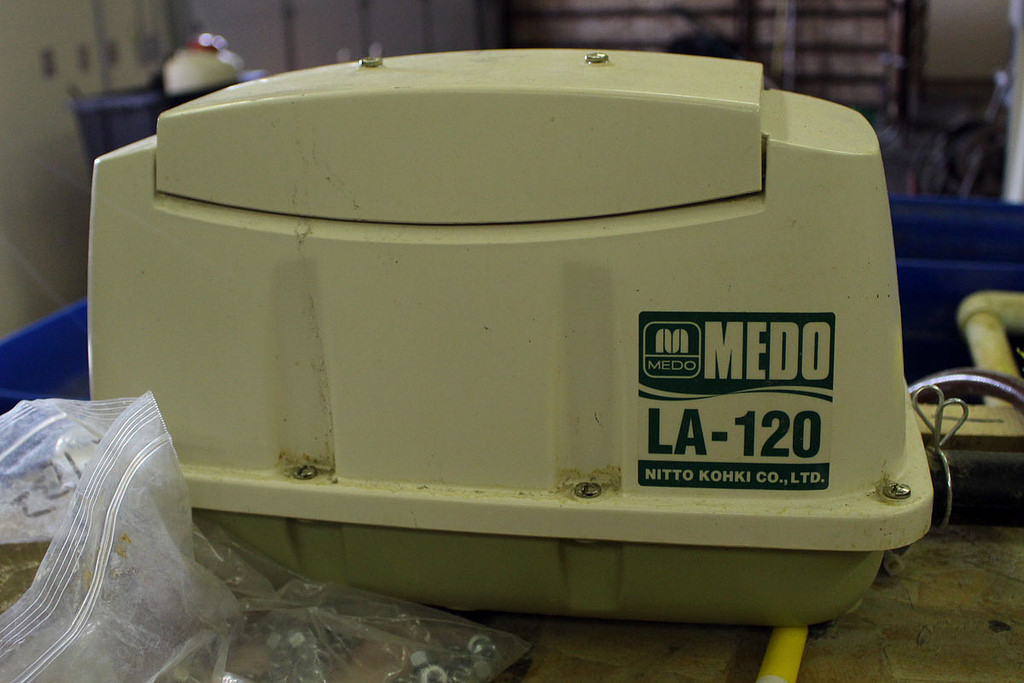
It's a primitive system for a saltwater system that we're used to, that's for sure.
It's definitely going to be an ambitious project to convert this to saltwater, but I think there's a lot of potential with what we have.
In the background of the third photo, you can see the other system; which must be the one Riley described. This one has two tubs hooked up the the bead filter with a nicer bio-tower, in-line UV system and other gadgets. I'm guessing the third tub was bogarted for the smaller system and additional (cheaper) filtration components were purchased to run it.
October 4, 2017.
Over the weekend, we were able to procure a used 90gal display tank, a 30BR sump and a Mag 7 return pump from a TCMAS member's classified listing. The stand was shorter than desired so I passed on it; I can build what we need.
Eric brought the 90gal system to school already to start cleaning it up. Once the tanks are cleaned up, it'll be time for him learn how to be a plumber. And this weekend, we will build the new stand; nothing fancy, just a typical 2x lumber build.
The better news of the week is that the school officially approved Eric's proposal and he can start collecting equipment and donations.
Eric was permitted to start a GoFundMe account to help raise funds to purchase needed equipment and supplies. Please take a moment to visit his page and consider helping him out.
Eric Langer - Shark Hatchery Lab
If you have anything that you would like to donate to the lab, please let me know. The sooner Eric can get the necessary equipment, the sooner he can get some shark eggs; which he already has two suppliers waiting for the system to be ready. As funding comes in, Eric will start ordering the basic equipment needed to get the system up and running; plumbing, pumps, lights, heaters, filtration media and salt mix. If you have anything laying around in boxes that you think could be of value to the lab, let me know.
I, personally, would like to thank everyone that takes a moment to contribute to Eric's project; whether by donating or contributing in this thread. Any and all assistance is greatly appreciated. Thanks!
October 15, 2017.
And we're off; sort of.
Our first order of supplies arrived; a new RODI unit along with a heater, comprehensive test kit and basic plumbing supplies. I stopped by the school on Friday to deliver the supplies to the lab and worked on setting it up. We got the tank on the new stand, new bulkheads installed and I figured out what we needed to do for the plumbing. I wish we could've gotten more accomplished, but when it's a school day with students milling around, and the class is just under an hour long, time flew by!
The next steps will be to install the RODI unit to one of the water sources, acquire a couple of water reservoirs and start making clean water and mixing saltwater. I brought in a box of salt mix for when the water is ready.
We're still looking for a lighting source (but that's not urgent) and a small controller; mostly to control the heater with a temperature probe and eventual lighting timer.
We already have sources for live rock, sand and shark eggs lined up, so it's a matter of getting the tank filled up and running.
The fundraising on GoFundMe has been crucial to get this project started. Every donation is greatly appreciated; even if it's just a buck or two. If the fundraising reaches it's goal, we've talked about having an "Open House Tour" to show everyone what their donations have created for the school's aquaculture lab. (And there just may be some new cookies revealed during the event!)
In addition to monetary donations, any unwanted equipment would be greatly appreciated. There's always a need to have extra supplies on hand; back up heaters, pumps, thermometers, refractometers and maintenance supplies. And any unwanted consumables would be appreciated; carbon, filter pads/socks/floss, RODI filters and salt mix.
"Thanks!" to everyone that has donated thus far; dollars or equipment.
Here's Eric next to the hatchery system.
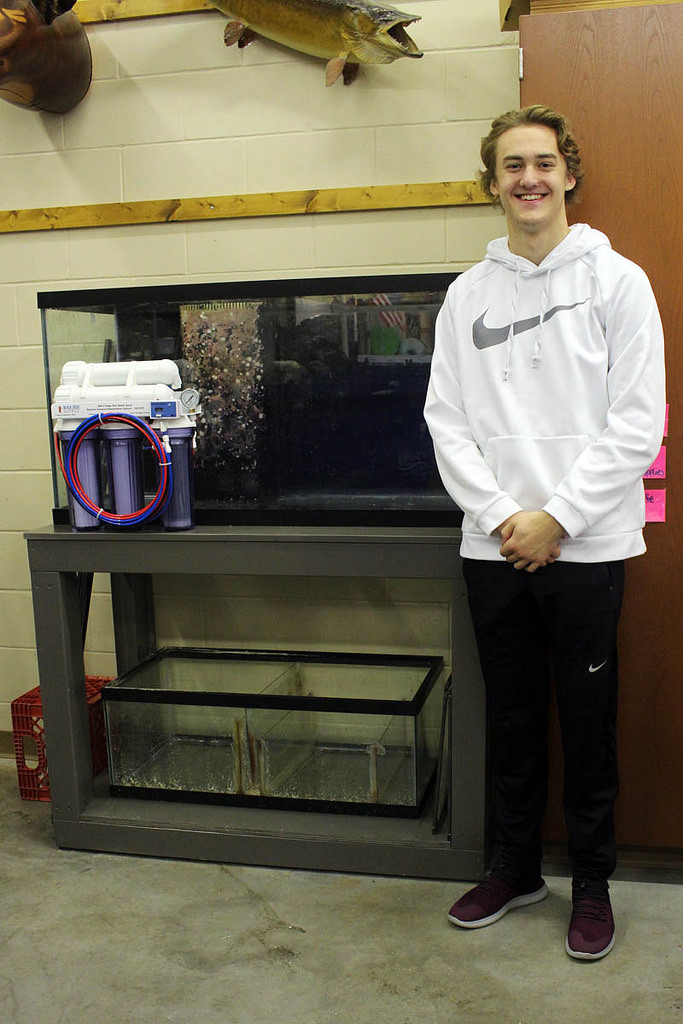
October 22, 2017.
This past week, we were able to get the plumbing finished on the hatchery system and ran a leak test. Other than a drip coming from the return tubing and hose barb, we're ready to start making saltwater this next week.
A huge "Thank you!" to TCMAS member Riley for donating a protein skimmer to the project. This is a huge help to maintaining a clean system and allowing the monetary donations go towards other necessary components of the project. Riley also threw in an old Brute container that will serve as one of the water change maintenance containers.
Eric and I drove over to Riley's house to pick up the donations and in doing so, we got to see his very own shark system. We were very impressed with all of it. I think Eric was more impressed with the number and size of Riley's sharks while I was impressed with the meticulous attention to detail and the quality of work Riley put into the filtration system. It was definitely inspiring on all accounts.
So this next week, Eric will start to make RODI water and begin mixing up the first batches of saltwater. He will also send out updates to a few people that have offered to donate live rock and sand.
November 20, 2017.
There's been a few updates. I've updated the FB posts but forgot to add them here.
Before the end of October, we got the plumbing finished and filled the tank with saltwater.
LiveAquaria donated and sent Eric a few essential items including two boxes of their new salt mix. Along with the salt and supplies, the donated a few bags of live sand and two boxes of cured Reef Ready Live Rock.
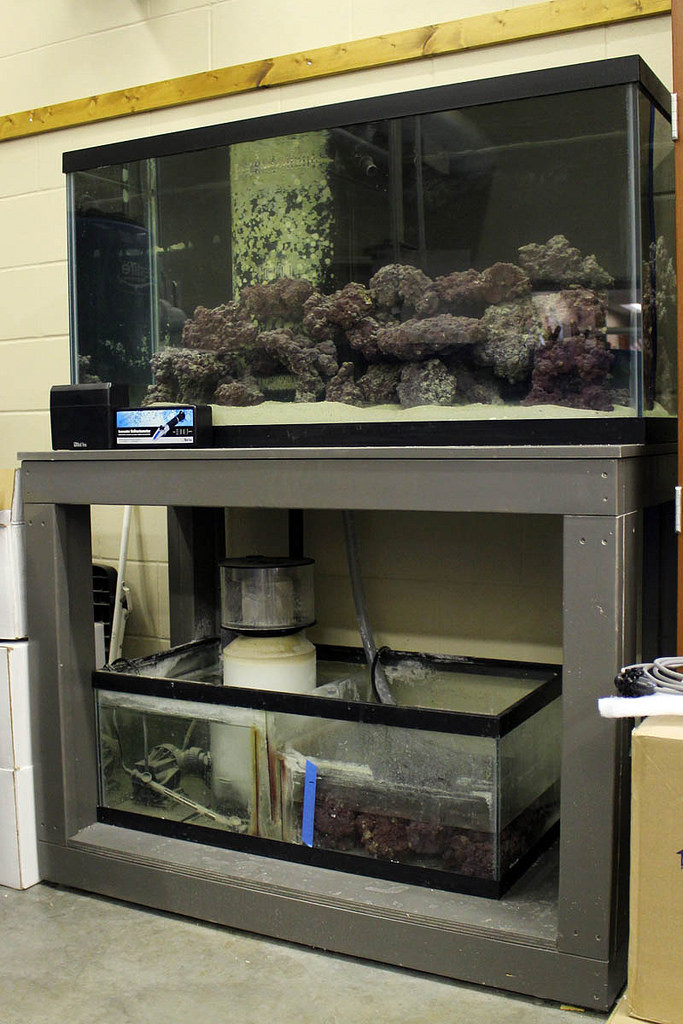
After a couple weeks of cycling and adding bacteria, the water was cycled and we were ready to add the first livestock. Eric and I attended LiveAquaria's Open House tour in hopes of getting some eggs for the system. We knew ahead of time that all of the eggs that had been in stock had hatched, but they were hoping to get more in prior to the tour. Unfortunately, no new eggs had arrived and all of the pups that hatched had been purchased.
In hopes of good karma, the cookies that I made for the LiveAquaria staff this visit were of Banded Cat Shark pups.
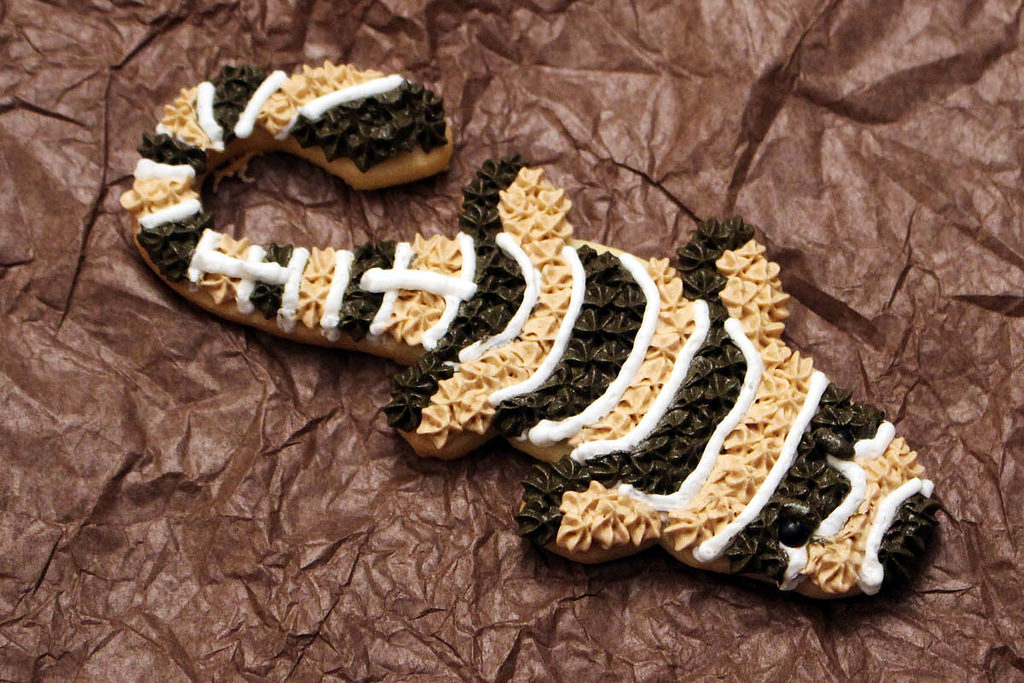
While at LiveAquaria, we purchased some more supplies including a simple Marine LED fixture with programming capabilities so we don't have to worry about the lighting. We won a box of salt mix in the raffle, so they're good on salt for a little while.
In the meantime, we will be adding a controller to the system; Thanks for the donation, Ryan(RSnodgrass)! The controller will allow us to set up the ATO system with a BRS dosing pump we bought from Eric (eschulist). We also bought a larger return pump from John (patent) to see if we can increase the flow through the tank and system.
Eric has feelers out there for more sources for shark eggs but there doesn't seem to be many available at this time, so we wait.
I'll stop the first post here as we're about to get to the exciting part of the project.
Thanks for reading and following along!
This is going to be a thread documenting an independent study project of hatching and raising small sharks by my son at his high school.
I've asked if I could bring this project over to Reef2Reef to share with this community and I was granted permission to do so.
This project was initially started late last summer and I've been documenting it on my local forum (TCMAS.org) and my personal Facebook page. By bringing the thread over to Reef2Reef, it would broaden the audience and hopefully elicit more response/discussion with the project itself.
Since this project has been ongoing, I'll post the dates of the original post to help recreate the timeline.
Let's get you all caught up. This first post will be a long one!!!
August 31, 2017.
It appears that this next year will be full of new experiences for my son; and myself.
My son, Eric, will be starting his senior year of high school next week and he will be taking a biology independent study course. These courses usually involve the student presenting a project that they will work on throughout the year, conduct research and experiments, submit reports and whatnot.
He's considered breeding clownfish or cardinalfish in the past but wasn't all too thrilled about doing that. During our last visit to Rhinelander (LiveAquaria's Aquaculture Coral and Aquatic Life Facility) , he noticed a tank full of banded cat shark eggs. He asked if we could set up a tank at home to hatch a shark. I mentioned that he could do that as his biology project; not thinking it was even a possibility.
This week, he approached his instructor and she was actually on board with that idea. The school has an established aquatic lab consisting of three freshwater systems, but one of them is currently empty and could be converted to saltwater. The instructor told Eric that he needed to search out resources and additional support; that'd be me. Eric has already reached out to Kevin with LiveAquaria about sourcing equipment and livestock; and he's on board. I have reached out to a few people that I know asking for input and recommendations. Eric and I will be meeting with his instructor and the school to discuss his project tomorrow. Based on the amount of outside support we can garner, the school is willing to ask for grants to establish a saltwater program at the school. My son wants to be the student to bring attention to the ocean and its inhabitants to his school; and to have the program continue beyond his involvement.
Why didn't we have opportunities like this when we were in school?
Eric plans to study the marine sciences when he attends college next year. He has a definite interest in sharks and wants to pursue a career in studying them, so a project like this (while still in high school) will be a great step towards his future goals.
And I'm excited to be along for the ride!
Wish us luck!
September 1, 2017.
Post Instructor Meeting Update.
Our meeting with Eric's instructor went rather well. She seems just as excited as were are about this project.
When we arrived, she had a class in session (freshman started today, everyone else on Tuesday), so we toured the lab for a while. The lab consists of two systems. The large system has two large vats (800gal each) hooked up to a commercial sized filtration system with a bead filter, biofilter, UV sterilizer and other gadgets that are currently housing tilapia that are grown and then sold. The smaller system (the one Eric gets to convert) consists of a 800gal vat with a much simpler filtration system; sediment tray, biofilter and mechanical filter that is all run via an air pump and uplift plumbing.
So the good news is that the system is a clean slate and is ready to be torn down as soon as needed for conversion. The bad news is it is a clean slate and much work and potential changes will need to be done for the conversion. The more immediate plan is to design a system (standard aquarium set up) that can house the shark eggs and juvenile sharks, send off Eric's proposal to various sources for support and donations and then begin the dismantling and conversion of the vat system.
This is going to be quite the commitment for my son, so we'll see how he does; and we'll see how much I get/need to contribute.
September 13, 2017.
I posted this on my Facebook page, but I thought I would add it here as not everyone I know here is on Facebook.
Jason Langer is looking for volunteers.
19 mins ·
Attn: My Saltwater Aquarium Friends
My son, Eric, has started his senior year of high school and is already pursuing his interest for an education in the Marine Sciences. He is taking an Independent Study course for the year to concentrate on his personal interest in sharks.
Our high school has an existing freshwater aquaculture lab with multiple vat systems where they raise tilapia and blue gill each year. The school has granted Eric the permission to start a saltwater system and the opportunity to convert one of the large freshwater systems to saltwater. This will be a new venture for the school and its biology department. Eric's goal is not only to raise to sharks, but to bring attention of the entire ocean and the life that lives there to the school and student body.
This will be an ambitious adventure for Eric that will involve a lot of time and hard work; and support. I applaude Eric for his drive and ambition and I have volunteered to support and assist him during this project.
This is where I reach out to you and ask you to read Eric's proposal and request for assistance with his project.
"Hi. My name is Eric Langer.
I am currently a senior attending New Richmond High School in New Richmond, Wisconsin. I am currently working in our aquaculture lab that has been running for almost ten years.
This year, I am working on a project for my Independent Study course involving sharks. My goal for this project is to hatch and raise some smaller species of sharks; i.e. coral banded sharks, horn sharks and/or catsharks . And I hope to grow this small project by converting an existing freshwater 800 gallon system into a saltwater system based around sharks and rays with other compatible and easy to keep fish. The ultimate plan is for these systems to continue running after I graduate, bringing saltwater aquaculture to our high school.
As most of you know, saltwater systems aren't cheap, and getting hands on materials needed for my project as a full-time enrolled high schooler isn't the easiest thing to do.
My goal is to set up a 75 gallon aquarium with a 20 gallon long sump. I will need the basic equipment to set up this system; i.e. tanks, filtration, heating and lighting. Other needed materials are items like salt mix, sand and live rock, water filtration equipment and materials, water conditioners, test kits and foods. A saltwater aquarium system will be new to our aquaculture lab so I will be starting from ground zero. Any donations are greatly appreciated as this will be a huge step for me as a high schooler in furthering my career in Marine Science.
As for the 800 gallon system, I am hoping to get more information about how the school will allow me to receive donations for a protein skimmer to switch over the current 800 gallon system from freshwater to saltwater; as there are some changes that need to be made for the switch to happen. I would also like to get some feedback on the system I have to work with and what changes should be considered.
Last, but not least, I will eventually need to acquire some shark eggs.
Feel free to email me if you have any recommendations or questions at [email protected] or for a list of items needed for these projects.
You are also free to ask any questions or leave any comments in this post.
Thanks you for your time.
Eric Langer"
As Eric's dad, it's very exciting to see his enthusiasm and eagerness towards furthering his education and start a path towards a career he (and I) will enjoy.
Thanks for taking the time to read this; and Eric's proposal.
If you have any questions or comments that you would like to ask me, send me a PM. I am more than willing to be the liaison between you and my son.
If you think of anyone that could possibly be of assistance to Eric's project, please share this with them.
I took some photos of the existing system when I visited the lab; I'll post those later.
The existing system is one of the pre-packaged systems offer by Aquatic Eco-Systems. It's a 1000gal vat (filled to 800gal) with a bottom drain that feeds a sediment tray, a bio-tower and a mechanical filter tower and it's air driven; a large air pump is hooked up to a manifold that feeds multiple airlift tubes. The only other piece of equipment is a drop in heater. So there's not much to work with (for now), but it's a place to start.
The smaller system that will be converted.


Here's the filtration systems.
The tub has two drains; one drain feeds the sediment tray and the other drain goes to the mechanical filter and bio-tower.
What you cannot see is that there's a drop in heater in the main tub; one of those long "L"-shaped ones with the heating element sitting just off the floor of the tub.

The heart of this system; an air pump.
The pump is connected to a manifold that has eight lines going to various lift tubes to move the water. If I recall correctly, two lines are for returns, two lines are for circulation, two lines for the sediment tray, one line for the bio-tower and one for the mechanic filter.

It's a primitive system for a saltwater system that we're used to, that's for sure.
It's definitely going to be an ambitious project to convert this to saltwater, but I think there's a lot of potential with what we have.
In the background of the third photo, you can see the other system; which must be the one Riley described. This one has two tubs hooked up the the bead filter with a nicer bio-tower, in-line UV system and other gadgets. I'm guessing the third tub was bogarted for the smaller system and additional (cheaper) filtration components were purchased to run it.
October 4, 2017.
Over the weekend, we were able to procure a used 90gal display tank, a 30BR sump and a Mag 7 return pump from a TCMAS member's classified listing. The stand was shorter than desired so I passed on it; I can build what we need.
Eric brought the 90gal system to school already to start cleaning it up. Once the tanks are cleaned up, it'll be time for him learn how to be a plumber. And this weekend, we will build the new stand; nothing fancy, just a typical 2x lumber build.
The better news of the week is that the school officially approved Eric's proposal and he can start collecting equipment and donations.
Eric was permitted to start a GoFundMe account to help raise funds to purchase needed equipment and supplies. Please take a moment to visit his page and consider helping him out.
Eric Langer - Shark Hatchery Lab
If you have anything that you would like to donate to the lab, please let me know. The sooner Eric can get the necessary equipment, the sooner he can get some shark eggs; which he already has two suppliers waiting for the system to be ready. As funding comes in, Eric will start ordering the basic equipment needed to get the system up and running; plumbing, pumps, lights, heaters, filtration media and salt mix. If you have anything laying around in boxes that you think could be of value to the lab, let me know.
I, personally, would like to thank everyone that takes a moment to contribute to Eric's project; whether by donating or contributing in this thread. Any and all assistance is greatly appreciated. Thanks!
October 15, 2017.
And we're off; sort of.
Our first order of supplies arrived; a new RODI unit along with a heater, comprehensive test kit and basic plumbing supplies. I stopped by the school on Friday to deliver the supplies to the lab and worked on setting it up. We got the tank on the new stand, new bulkheads installed and I figured out what we needed to do for the plumbing. I wish we could've gotten more accomplished, but when it's a school day with students milling around, and the class is just under an hour long, time flew by!
The next steps will be to install the RODI unit to one of the water sources, acquire a couple of water reservoirs and start making clean water and mixing saltwater. I brought in a box of salt mix for when the water is ready.
We're still looking for a lighting source (but that's not urgent) and a small controller; mostly to control the heater with a temperature probe and eventual lighting timer.
We already have sources for live rock, sand and shark eggs lined up, so it's a matter of getting the tank filled up and running.
The fundraising on GoFundMe has been crucial to get this project started. Every donation is greatly appreciated; even if it's just a buck or two. If the fundraising reaches it's goal, we've talked about having an "Open House Tour" to show everyone what their donations have created for the school's aquaculture lab. (And there just may be some new cookies revealed during the event!)
In addition to monetary donations, any unwanted equipment would be greatly appreciated. There's always a need to have extra supplies on hand; back up heaters, pumps, thermometers, refractometers and maintenance supplies. And any unwanted consumables would be appreciated; carbon, filter pads/socks/floss, RODI filters and salt mix.
"Thanks!" to everyone that has donated thus far; dollars or equipment.
Here's Eric next to the hatchery system.

October 22, 2017.
This past week, we were able to get the plumbing finished on the hatchery system and ran a leak test. Other than a drip coming from the return tubing and hose barb, we're ready to start making saltwater this next week.
A huge "Thank you!" to TCMAS member Riley for donating a protein skimmer to the project. This is a huge help to maintaining a clean system and allowing the monetary donations go towards other necessary components of the project. Riley also threw in an old Brute container that will serve as one of the water change maintenance containers.
Eric and I drove over to Riley's house to pick up the donations and in doing so, we got to see his very own shark system. We were very impressed with all of it. I think Eric was more impressed with the number and size of Riley's sharks while I was impressed with the meticulous attention to detail and the quality of work Riley put into the filtration system. It was definitely inspiring on all accounts.
So this next week, Eric will start to make RODI water and begin mixing up the first batches of saltwater. He will also send out updates to a few people that have offered to donate live rock and sand.
November 20, 2017.
There's been a few updates. I've updated the FB posts but forgot to add them here.
Before the end of October, we got the plumbing finished and filled the tank with saltwater.
LiveAquaria donated and sent Eric a few essential items including two boxes of their new salt mix. Along with the salt and supplies, the donated a few bags of live sand and two boxes of cured Reef Ready Live Rock.

After a couple weeks of cycling and adding bacteria, the water was cycled and we were ready to add the first livestock. Eric and I attended LiveAquaria's Open House tour in hopes of getting some eggs for the system. We knew ahead of time that all of the eggs that had been in stock had hatched, but they were hoping to get more in prior to the tour. Unfortunately, no new eggs had arrived and all of the pups that hatched had been purchased.
In hopes of good karma, the cookies that I made for the LiveAquaria staff this visit were of Banded Cat Shark pups.

While at LiveAquaria, we purchased some more supplies including a simple Marine LED fixture with programming capabilities so we don't have to worry about the lighting. We won a box of salt mix in the raffle, so they're good on salt for a little while.
In the meantime, we will be adding a controller to the system; Thanks for the donation, Ryan(RSnodgrass)! The controller will allow us to set up the ATO system with a BRS dosing pump we bought from Eric (eschulist). We also bought a larger return pump from John (patent) to see if we can increase the flow through the tank and system.
Eric has feelers out there for more sources for shark eggs but there doesn't seem to be many available at this time, so we wait.
I'll stop the first post here as we're about to get to the exciting part of the project.
Thanks for reading and following along!



